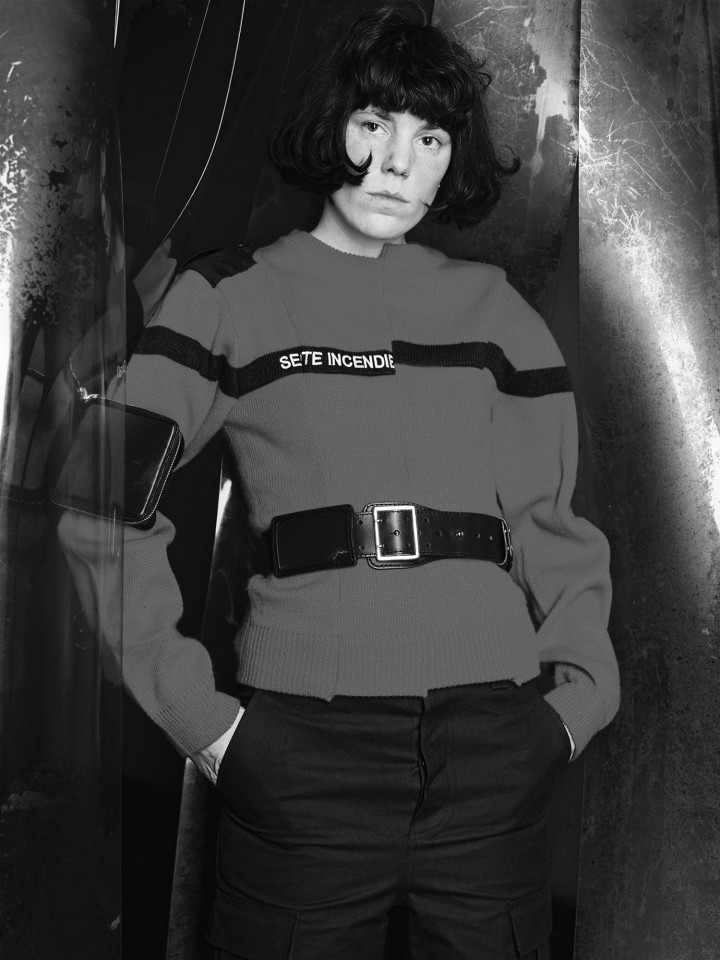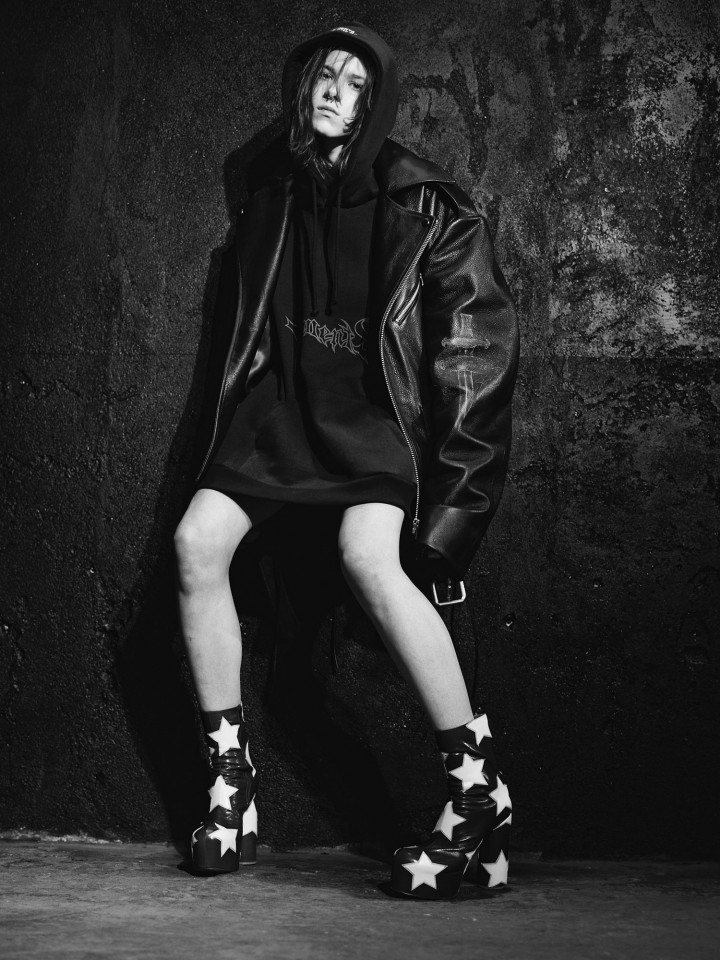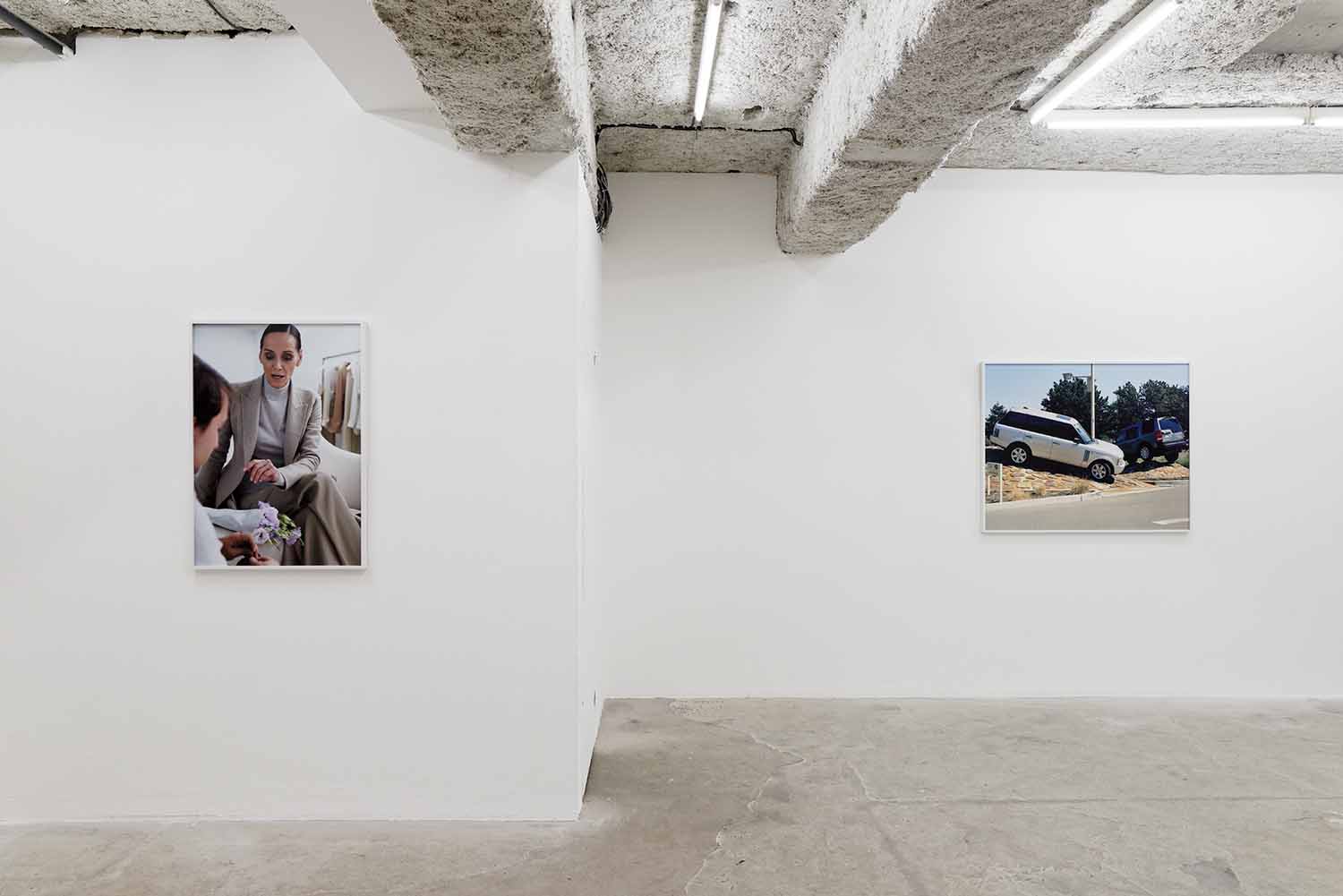What is amusing about fashion is the thirst for the new every season: the new designer, the new model, the new location for the show, the new VIP going to the show. This last fashion week in Paris everyone was chatting about Vetements, the label designed by a collective of friends that is taking Paris by storm. They even managed to bring Jared Leto and Kanye West to Le Dépôt, one the largest gay sex clubs in the city, where they staged a sharp, edgy fashion show. But don’t get them wrong: Vetements is not fishing for easy celebrity or shocking strategies. They are just focusing on their passion: making clothes. And it’s working. Flash Art chatted with Demna Gvasalia, their official spokesperson.
In a time when young designers post selfies on Instagram, you seem to be focusing on actual garments rather than on your image. But who is behind Vetements? How much do you want to say about yourself? Why you are so discreet? How did it all start?
Vetements started a few years ago, and it is first of all a story of friendship: a group of us were working for different companies, and we all felt a bit limited by our jobs in a corporate environment and wanted to focus on our very first passion of clothes making — particularly garments we would actually wear. Our friendship also came from a different place than fashion: we all cultivate a strong interest in scenes that are not directly related to the business. We loved the same music and club scenes in Paris, and by meeting over the past years we just felt a strong need to create clothes that we would actually like to wear.
Regarding our image, we think that our work speaks best for us; the product is the focus of our brand concept rather than the personalities behind it. We think today the garment should have exposure as a result of our teamwork. Also, most of us do not feel comfortable with photos being taken and exposed publicly, so the idea of staying behind the product was born naturally .
Your last show was staged in a sex club in the center of Paris. Invites to the sale were printed on cash resister receipts. I see in all those unique ways of communicating a strong connection to underground culture. The bomber jackets of the last collection make me think of club and rave culture. What are your references?
The bomber was linked to street culture, rave, skinhead dress codes. We really look at real life as our source of inspiration; receipts were linked to our idea of fashion being a commercial industry and product created to be sold and worn first of all. For example, we do find Paris very inspiring at the moment. Whereas a lot of people find the city boring and not inspiring, we love the energy that comes from some parts of the city. The way people organize their wardrobe around a few items is interesting to us. Cities like London or New York are already overcrowded with fashion-conscious people, and they relate a lot to what is in vogue at the moment. Our inspiration comes from somewhere else. The sex club where we staged our show was a simple decision, as it’s one of the few “clubs” in Paris that stays authentic. We just love the place.
A lot of people are pointing out a strong connection to the way Martin Margiela started his brand. I personally see a more conceptual approach, similar to the appropriation process of artists like Sturtevant. The result is oddly fresh and needed in fashion. How do you manage to create homage and yet remain so original?
Margiela’s aesthetic is close to ours, but we are not into seasonal concepts and have no ambition to be considered avant-garde. Our approach is purely garment-oriented, and our main purpose is to make real, authentic clothes that people want and need to wear. We just wish to be real clothes makers. Also different from Margiela, we did not choose to stay anonymous. We are eight people, and each of us has a specific role in design, press, product development and marketing. We are now completely open about our commitment with the brand Vetements, but we stay faithful to our idea of the collective.
Hoping that your next project will include a men’s line, I have to ask: What’s coming up next? How do you want to develop the brand?
We plan to concentrate on two collections for women at present, to establish a strong and stable industrial base. Once this is achieved we definitely plan to start a men’s line with the same creative approach as for women. Actually we can’t wait! We also are planning to open a store someday, probably in Paris.



